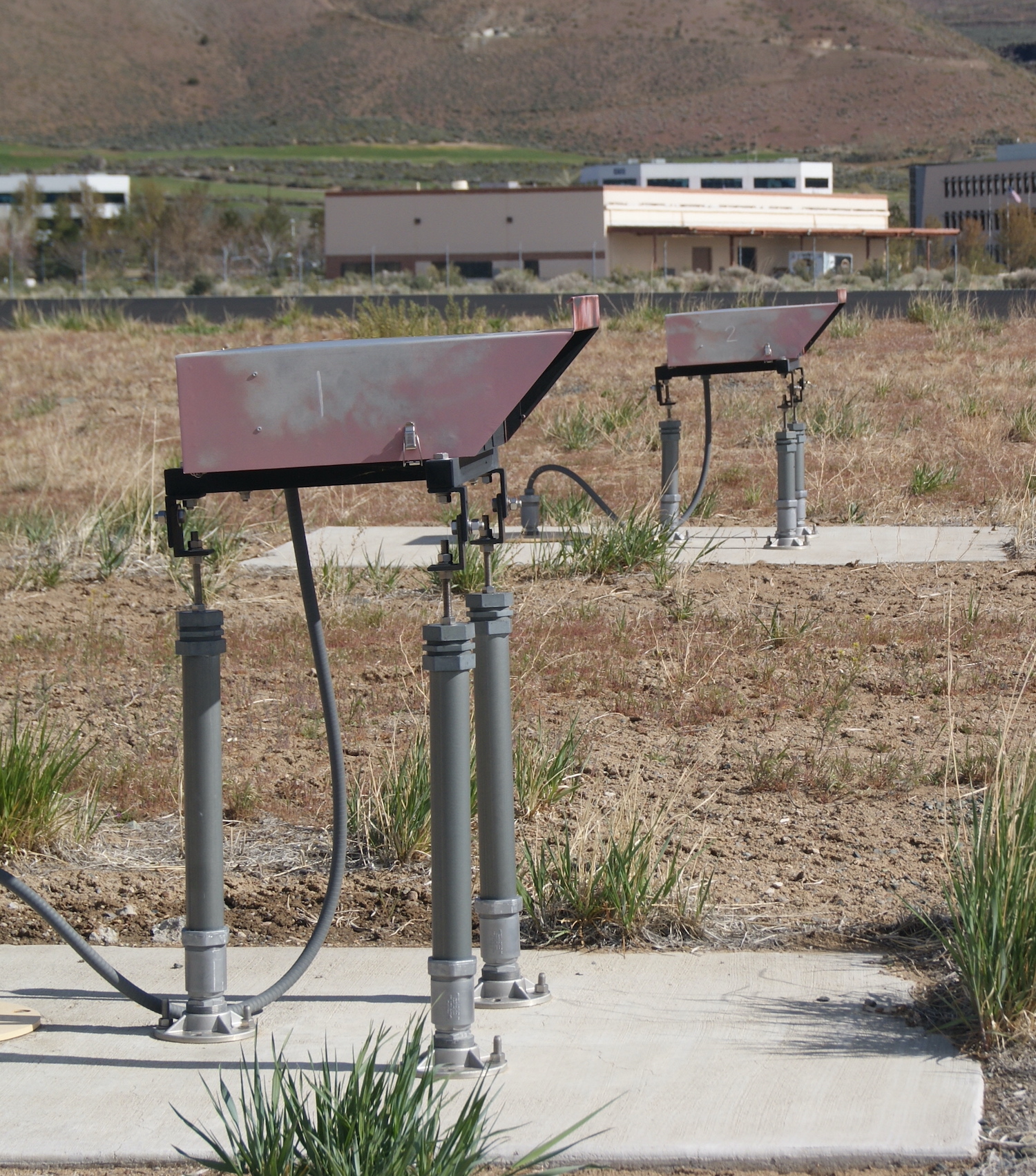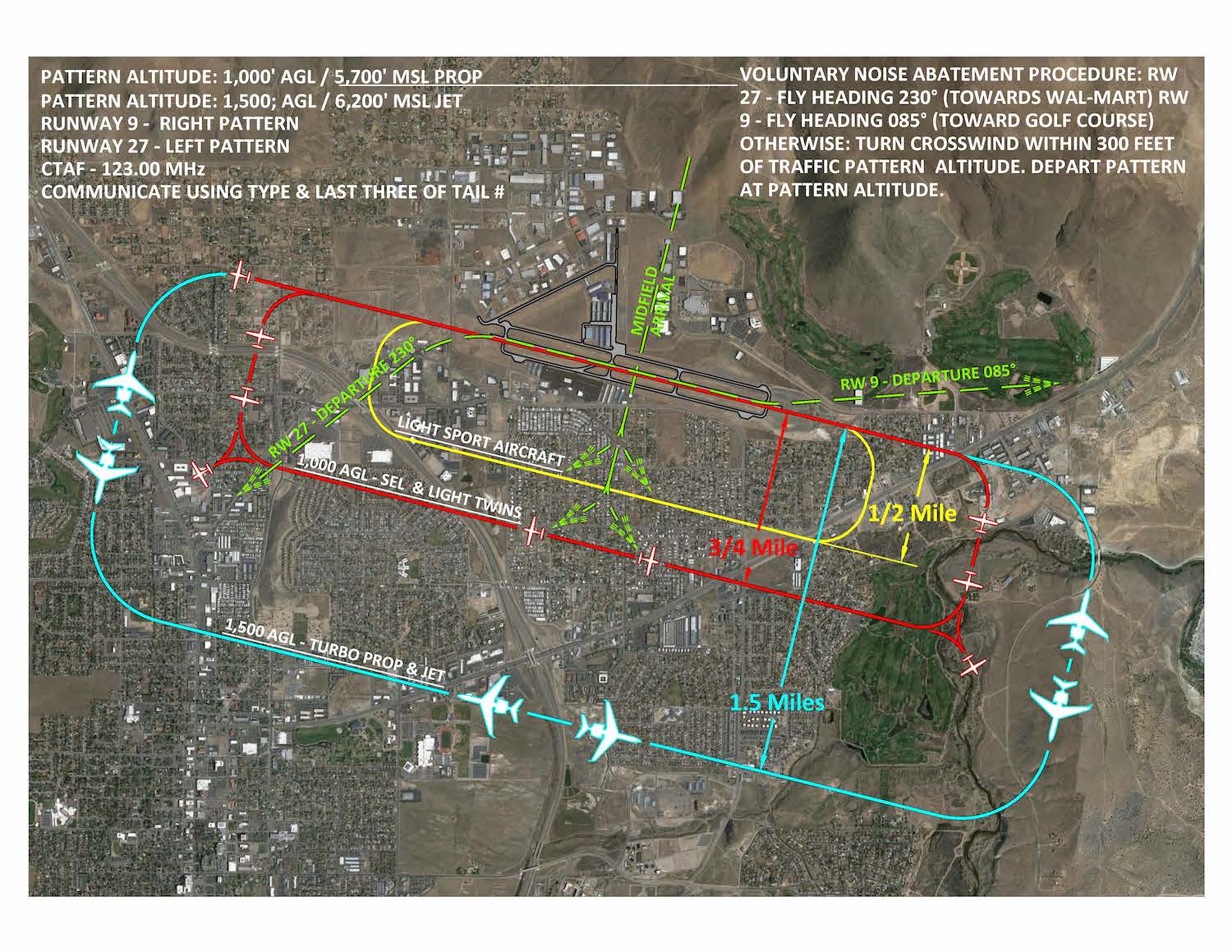The Carson City Airport is planning runway improvements that will better accommodate pilots who are using instrument flight rules, according to Corey Jenkins, airport manager.
Faith Evans/Nevada Appeal
 The Precision Approach Path Indicators, “PAPI’s,” are a set of lights that help pilots angle their landing correctly. (Photo: Faith Evans/Nevada Appeal)
The Precision Approach Path Indicators, “PAPI’s,” are a set of lights that help pilots angle their landing correctly. (Photo: Faith Evans/Nevada Appeal)
But the lights will be key for pilots using instrument flight rules. IFR allows pilots to fly with their instruments, as opposed to using visual flight rules.
Currently, IFR pilots must cancel their flight plans and switch to VFR when they try to land in Carson City at night or in smoky conditions, when they can’t see the runway from a certain distance. That means they must enter a rectangular traffic pattern, flying over the city, as opposed to landing when they first come over the mountains.
“(The precision approach lighting is) going to decrease the minimums – make it so pilots can get into the airport safely even in lower visibility situations,” Jenkins said.
Hence, less noise for residents and a more efficient route for pilots.
The runway approach lights will come in two parts – relocating the precision approach path indicators and adding a medium intensity approach lighting system. The PAPI’s help pilots angle their approach correctly at the right altitude, and the MALSF’s point to the end of the runway.
“(The MALSF’s are) all level with the runway. … They’re not any higher than the existing lighting on the airport, so there won’t be any light pollution caused by that,” Jenkins said.
Over the course of fiscal year 2022-23 the lights will cost the airport over $120,000 with a $1.8 million match in federal funding.
In the long run, Jenkins expects the improvements to reduce noise for the city and attract more IFR jets and charter flight operations to the airport.
 Pilots using visual flight rules must follow the traffic pattern in a rectangle over the city. Pilots using instrument flight rules may follow the green path over the mountains to the runway.
Pilots using visual flight rules must follow the traffic pattern in a rectangle over the city. Pilots using instrument flight rules may follow the green path over the mountains to the runway.